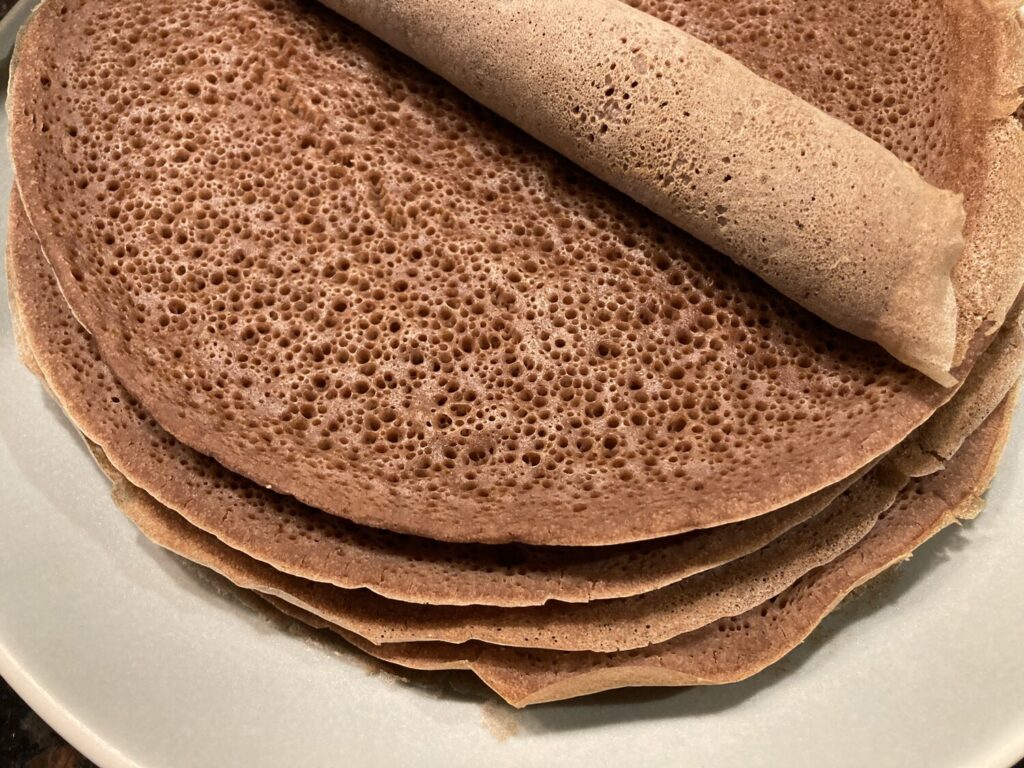
- 2 cups teff
- Water (about 2 to 2 1/2 cups)
- Himalayan salt
- Place 2 cups teff in a high speed blender and blend into a flour
- Put flour into a mixing bowl
- Add enough water until your batter is pourable(thinner than pancake consistency)
- Cover bowl with a cloth and leave on the counter until the next day
- It will smell sour and have fermentation happening but thats okay and good. It makes the injera taste delicious and only adds to the nutritional value.
- Add himalayan salt to taste and pour the batter into an iron skillet(coated with oil) and spread out with the back of a spoon. The injera will cook through without having to flip it over, but I like to flip it anyways for a few seconds once its done
- Add any topping you like or eat plain
I love making injera, and usually have a bowl fermenting on the counter 3-4days per week. The nutritional benefits of teff are so high and the fact that it is a gluten free grain keeps it in constant demand around the house. Teff is loaded with nutrients such as calcium, manganese, phosphorus, iron, copper, thiamin, and vitamin C. Teff contains 20-40% resistant starches and has a low glycemic index(GI) that helps to regulate blood sugar levels. Teff also contains lots of fiber to help keep you full longer and is low in sodium, fat, and tastes great. After the injera batter ferments for 18-24 hrs, (you will know it’s ready because it will start to smell sour), I add some himalayan salt and make flatbreads in the iron skillet. They taste so good alone, with coconut oil and honey, with your favorite nut butter, with cashew cream cheese, sliced avocados, and anything your heart desires! I also use that same batter to make healthy and satisfying banana pancakes by adding 2 smashed bananas, 1/4 cup of coconut sugar, some vanilla, and himalayan salt. The only complaints I get are when there isn’t any batter ready!


